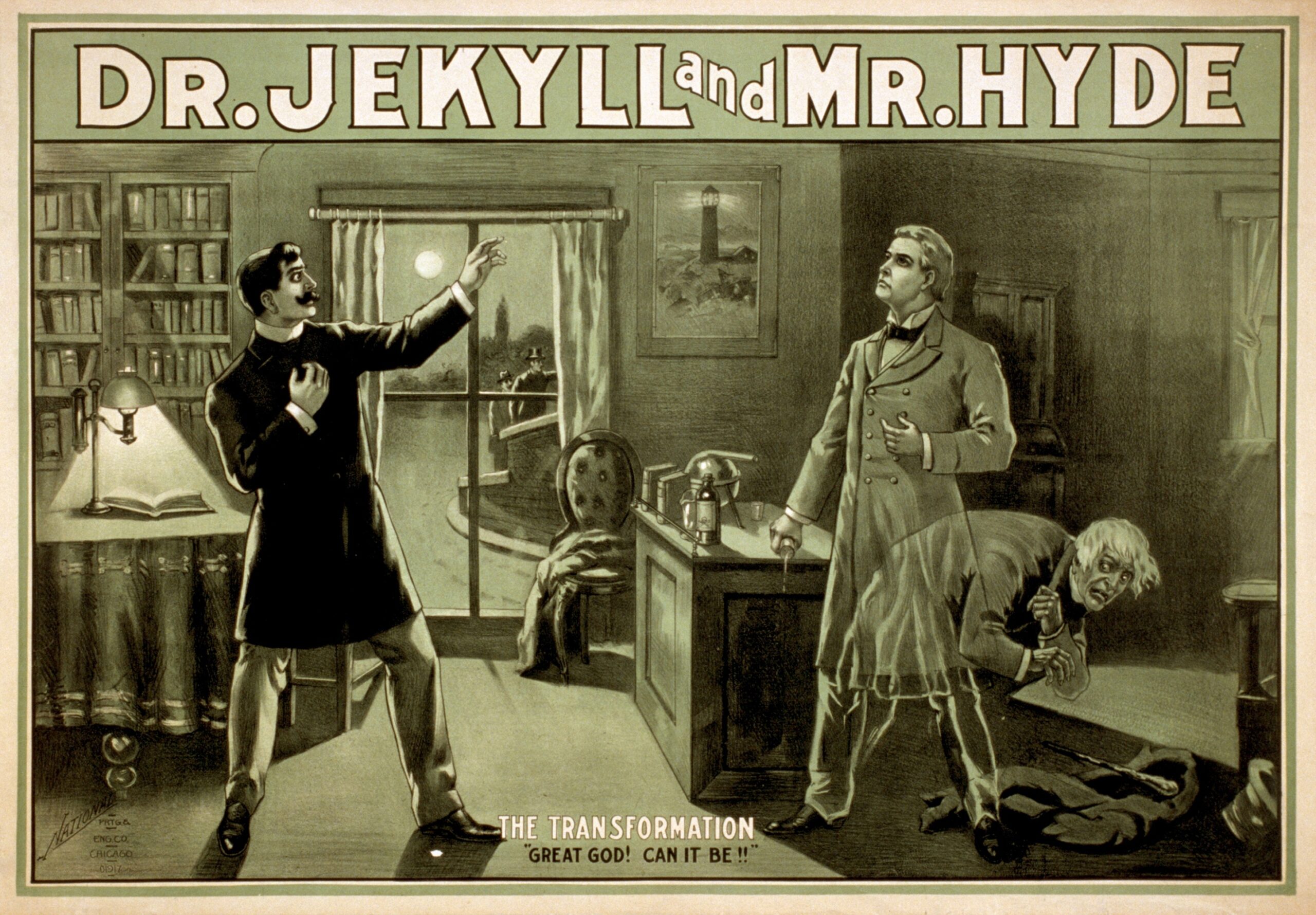
Robert Louis Stevenson: Will the Real Dr Jekyll Please Stand Up
Robert Louis Stevenson is best known for his adventure novels, including “Treasure Island” and “Kidnapped,” as well as for his psychological thriller “The Strange Case of Dr. Jekyll and Mr. Hyde.”
He was a Scottish novelist, poet, and travel writer who was born on November 13, 1850 in Edinburgh, Scotland. He was the only child of Thomas Stevenson, a successful civil engineer, and Margaret Isabella Balfour. Despite his father’s wishes for him to follow in his footsteps, Stevenson had a passion for writing from a young age.
Stevenson was educated at Edinburgh Academy and later at Edinburgh University where he studied engineering. However, he decided to pursue a career in literature instead. He began writing poetry and short stories, and in 1878, he published his first book, “An Inland Voyage,” a travelogue of his canoe trip through France.
In 1881, Stevenson met Fanny Van de Grift Osbourne, an American divorcee, while traveling in France. They fell in love and eventually got married in 1880, after Fanny obtained her divorce. They travelled together throughout Europe and the United States, and they settled in Samoa in 1889, before Stevenson died on December 3, 1894.
Stevenson’s most famous works include “Treasure Island” (1883), a classic adventure story about a treasure hunt on a deserted island, and “The Strange Case of Dr. Jekyll and Mr. Hyde” (1886), a horror story about a scientist who creates a potion that turns him into a violent, evil alter ego. “Kidnapped” (1886) is a historical fiction novel set in Scotland and tells the story of a young man who is falsely accused of murder and goes on the run.
Stevenson’s writing is known for its vivid descriptions of nature and its exploration of the human psyche. He also wrote essays and travel writing, which were widely read and praised. He was a popular and well-respected author during his lifetime and his works continue to be widely read and admired today.
Why Did Stevenson Write Dr Jekyll and Mr Hyde?
The novel tells the story of Dr. Henry Jekyll, a respected scientist and philanthropist who creates a potion that allows him to transform into his evil alter ego, Mr. Hyde. Through the characters of Jekyll and Hyde, Stevenson examines the idea that every person has both good and evil impulses within them, and that these impulses can sometimes be in conflict.
Stevenson was particularly interested in the idea of the “double” or “split self,” and he believed that this concept was a key aspect of the human experience. He wanted to examine the question of whether it is possible for a person to separate their good and evil selves, and if so, what the consequences of that separation might be.
Another reason why Stevenson wrote the novel is that he was fascinated by the idea of morality, and the consequences of acting on immoral impulses. He believed that people have the potential to do both good and evil and he wanted to explore this notion through the story of Jekyll and Hyde. He also wanted to explore the idea of repression and the idea that the more one represses one’s darker impulses, the more they will manifest in some form.
How Did Dr Jekyll Become a Horror Classic?
“The Strange Case of Dr. Jekyll and Mr. Hyde” is a novella written by Robert Louis Stevenson, first published in 1886. The story is set in 19th-century London and follows the story of Dr. Henry Jekyll, a respected scientist and philanthropist who creates a potion that allows him to transform into his evil alter ego, Mr. Hyde. Through the characters of Jekyll and Hyde, the story explores the idea of the duality of human nature and the idea that every person has both good and evil impulses within them.
The story begins with a lawyer, Mr. Utterson, investigating strange occurrences surrounding his friend Dr. Jekyll and his mysterious associate, Mr. Hyde. As the story progresses, it becomes clear that Jekyll and Hyde are the same person, and that Jekyll has been using the potion to transform into Hyde in order to indulge in his darker impulses without the constraints of society and his own conscience. However, as Jekyll becomes more and more dependent on the potion, he finds himself unable to control his transformations and becomes trapped in the persona of Hyde.
At the time of its release, “The Strange Case of Dr. Jekyll and Mr. Hyde” was well received by both critics and the public. The novel was a commercial success and it was praised for its exploration of the psychological and moral complexities of human nature. It was widely read and adapted into plays and films, and it continues to be considered a classic of literature today. The novel was also seen as a commentary on the Victorian society and its moral values, and it was seen as a critique of the society’s hypocrisy and the way they dealt with their darker impulses.
When Was the First Stage Adaptation?
“The Strange Case of Dr. Jekyll and Mr. Hyde” was first adapted into a play in 1887, just one year after the publication of the novella. The play was written by Thomas Russell Sullivan, an American playwright and it was produced by Richard Mansfield, a British actor.
The play was a commercial success and it was performed in various cities in the United States and the United Kingdom. Richard Mansfield starred as both Dr. Jekyll and Mr. Hyde, and he is credited with popularizing the story and making it a staple of the Victorian stage. He performed the play over 500 times and he was praised for his portrayal of both characters, particularly his dramatic transformations between Jekyll and Hyde. The play was also known for its elaborate stage effects and makeup, which helped to enhance the story’s themes of transformation and duality.
The play was also adapted into a silent film in 1908 and it was directed by Otis Turner and starred King Baggot as Dr. Jekyll and Mr. Hyde. This film was the first motion picture adaptation of the story, and it was also a commercial success and it helped to popularize the story even further.
Wait! Wasn’t Richard Mansfield Tied Up With Jack the Ripper?
Richard Mansfield, the British actor who starred in the first stage adaptation of “The Strange Case of Dr. Jekyll and Mr. Hyde” in 1887 and produced it, was not involved in the Jack the Ripper case. The Jack the Ripper murders took place in 1888, a year after the play’s premiere and Mansfield was not in London during the time of the murders.
The Jack the Ripper murders were a series of brutal killings that took place in the Whitechapel district of London in 1888. The identity of the killer, known as “Jack the Ripper,” was never conclusively determined, and the case remains one of the most famous unsolved mysteries in history.
Mansfield, who was known for his acting skills, was an accomplished stage actor who gained fame and critical acclaim for his performances in a variety of plays, including “Dr. Jekyll and Mr. Hyde” and “The Count of Monte Cristo”. He was not known to have any association with the Jack the Ripper case and no evidence has been found to suggest that he was involved in any way.
Jekyll and Hyde Films
The first film adaptation of “The Strange Case of Dr. Jekyll and Mr. Hyde” was made in 1908. It was directed by Otis Turner and starred King Baggot as both Dr. Jekyll and Mr. Hyde. The film was produced by the American Mutoscope and Biograph Company, which was one of the leading American film production companies at the time.
The film was a commercial success and it helped to popularize the story even further. It was praised for its special effects, particularly the transformation scenes between Jekyll and Hyde, which were achieved through the use of split-screen techniques and makeup. King Baggot’s portrayal of both characters was also well received, and he was praised for his dramatic performances.
The 1908 film was a silent film, it was shot in black and white and it was around 15 minutes long. It was followed by several other film adaptations over the years, the most notable one being the 1920 version directed by John S. Robertson and starring John Barrymore as Dr. Jekyll and Mr. Hyde. This version was considered a cinematic masterpiece and it was a commercial success.
- “Dr. Jekyll and Mr. Hyde” (1920), directed by John S. Robertson and starring John Barrymore as both Dr. Jekyll and Mr. Hyde.
- “Jekyll and Hyde… Together Again” (1982), a comedy film directed by Jerry Belson and starring Mark Blankfield as both Dr. Jekyll and Mr. Hyde.
- “Mary Reilly” (1996), a psychological horror film directed by Stephen Frears and starring Julia Roberts and John Malkovich, with Malkovich playing both Dr. Jekyll and Mr. Hyde.
- “The League of Extraordinary Gentlemen” (2003), a science fiction film directed by Stephen Norrington, starring Sean Connery, and featuring a version of Dr. Jekyll and Mr. Hyde.
- “Jekyll” (2007), a British television series that ran for one season and starred James Nesbitt as Tom Jackman, a modern-day descendant of Dr. Jekyll.
- “Once Upon a Time” (2011-2018), an American fantasy television series that explores a version of Dr. Jekyll and Mr. Hyde in the context of fairy tale characters and their stories.
- “Penny Dreadful” (2014-2016) an American-British horror television series that features a version of Dr. Jekyll and Mr. Hyde in the context of other literary and horror characters.
- “Jekyll and Hyde” (2015) a British television series that aired for one season, starring Tom Bateman as Robert Jekyll, the grandson of the original Dr. Jekyll.
- “Jekyll and Hyde” (2015) a South Korean television series that aired for one season, starring Hyun Bin as Gu Seo-jin, a modern-day version of Dr. Jekyll and Mr. Hyde.
This is not an exhaustive list, but some of the more notable films and television series that have explored the story of Dr. Jekyll and Mr. Hyde. The story has been adapted and reinterpreted in various ways over the years, but the core themes of duality and the struggle between good and evil remain central to all of them.
Spencer Tracy and Mr Hyde
Spencer Tracy was an American actor who appeared in a number of films and television shows throughout his career. He is considered one of the greatest actors in the history of American cinema, and he won two Academy Awards for Best Actor for his performances in “Captains Courageous” (1937) and “Boys Town” (1938).
In 1941, Spencer Tracy starred in the film adaptation of “Dr. Jekyll and Mr. Hyde,” directed by Victor Fleming and produced by MGM. The film was based on the Robert Louis Stevenson’s novella, and Tracy played the dual roles of Dr. Jekyll and Mr. Hyde. The film followed the story of Dr. Jekyll, a kind-hearted scientist who creates a potion that allows him to transform into his evil alter ego, Mr. Hyde.
Tracy’s portrayal of both characters was highly praised by critics and audiences alike. He was able to convey the contrast between the two characters with great skill and he was able to make the audience feel the tension and the inner struggle of Dr. Jekyll as he transforms into Mr. Hyde. He was able to convey the two different personalities with a great sense of nuance, his Jekyll was a man of science and reason, while his Hyde was a wild, animalistic, and dangerous.
The film was a commercial success and it was nominated for four Academy Awards, including Best Actor for Tracy’s performance. The film was also praised for its special effects, particularly the transformation scenes between Jekyll and Hyde, which were achieved through the use of makeup, lighting, and camera techniques.
Robert Louis Stevenson’s Death
Robert Louis Stevenson died on December 3, 1894, in Vailima, Samoa. He died from a cerebral hemorrhage (a bleed in the brain) brought on by complications from his long-standing health problems. He had suffered from chronic health issues throughout his life, including pulmonary tuberculosis, which is a bacterial infection that affects the lungs.
In 1889, he and his family moved to Samoa, where he built a house named Vailima. Although his health did not improve significantly in Samoa, he was able to continue writing and he produced some of his most famous works during this time, including “The Master of Ballantrae” and “The Ebb-Tide” while he was there.
Despite his illness, Stevenson remained active and engaged with the local community in Samoa. He was highly respected by the Samoan people, who called him “Tusitala” (meaning “Teller of Tales”). His death came as a shock to many, and he was deeply mourned by his friends and family.

